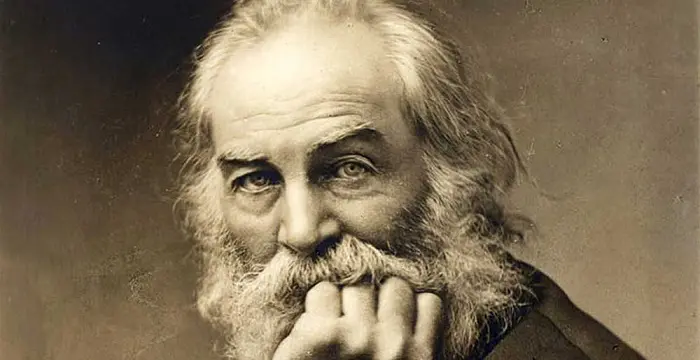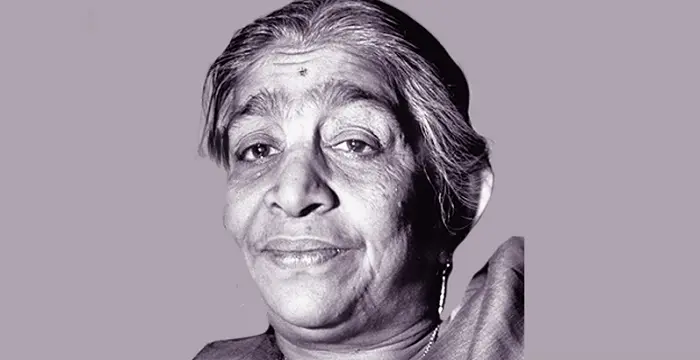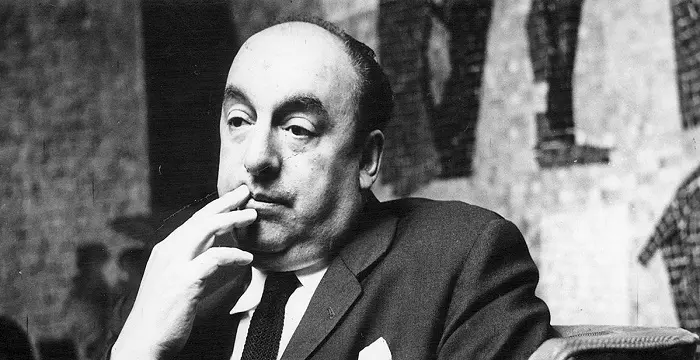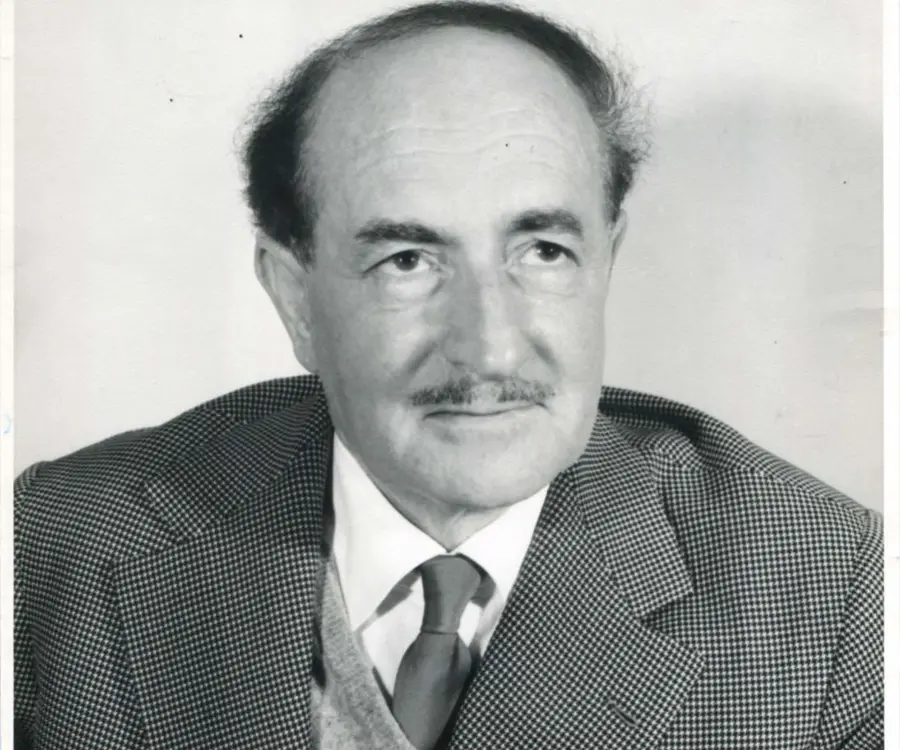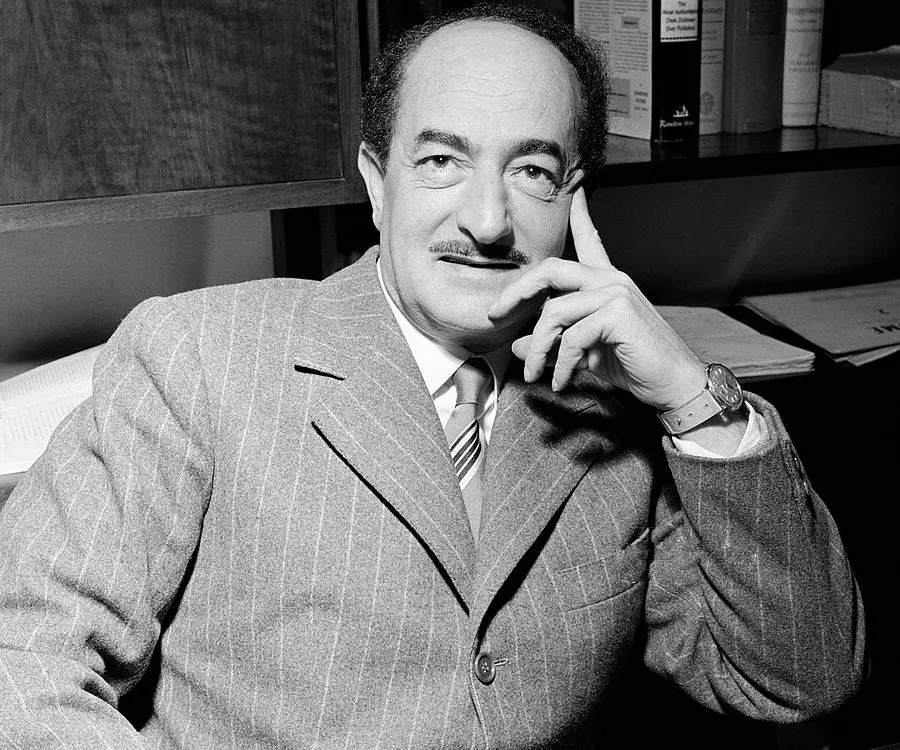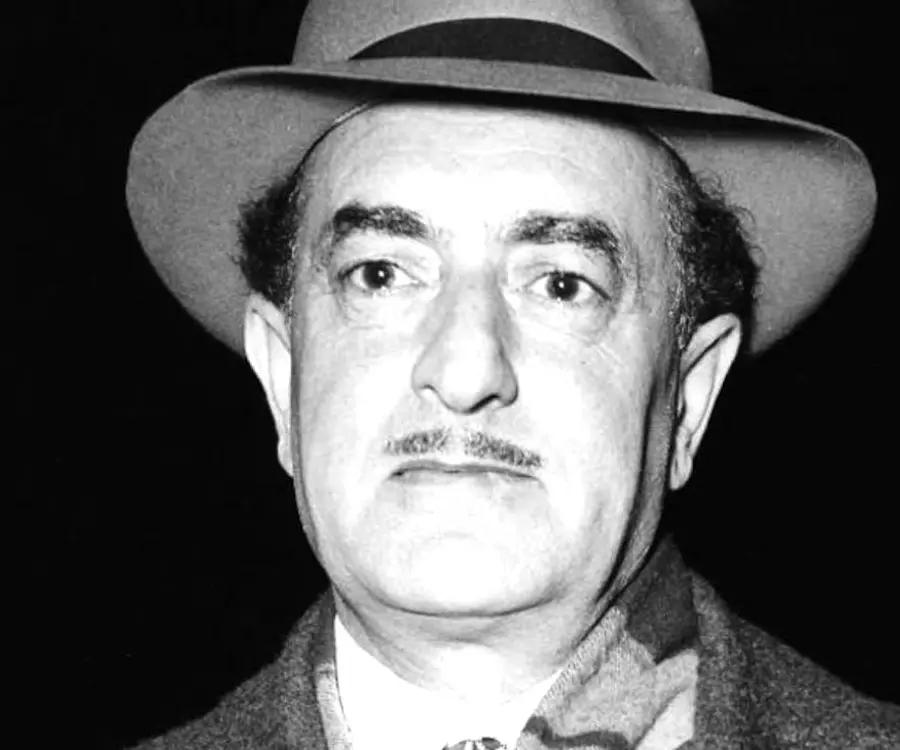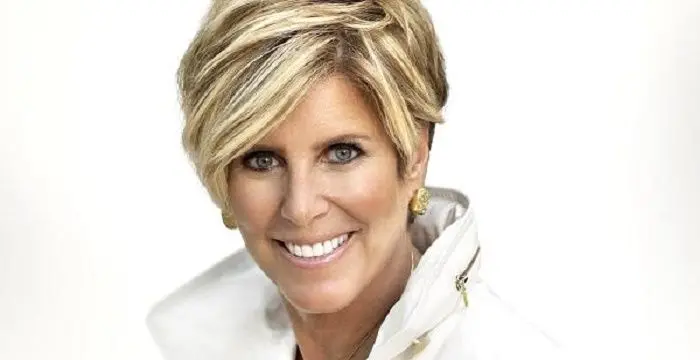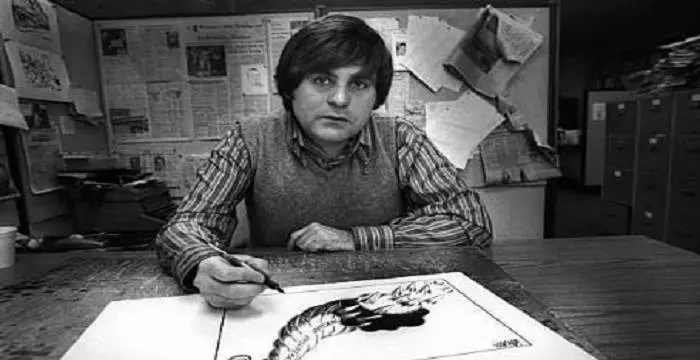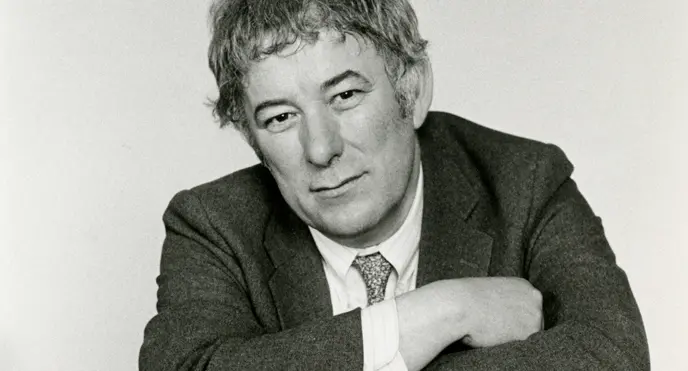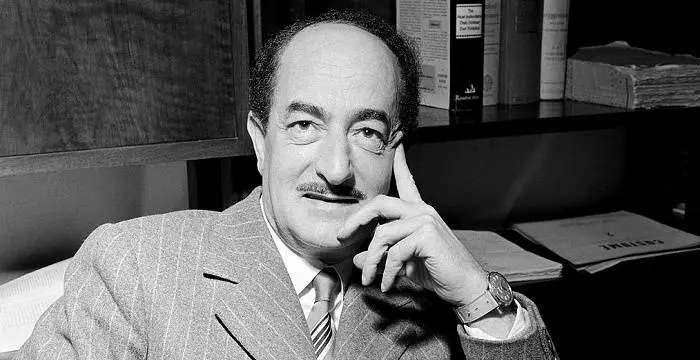
Salvatore Quasimodo - Author, Facts and Facts
Salvatore Quasimodo's Personal Details
Salvatore Quasimodo was an Italian poet, author, critic and translator
| Information | Detail |
|---|---|
| Birthday | August 20, 1901 |
| Died on | June 14, 1968 |
| Nationality | Italian |
| Famous | Nobel Laureates In Literature, Writers, Poets, Author, Poets |
| Spouses | Bice Donetti, Maria Cumani Quasimodo |
| Siblings | Enzo Quasimodo, Ettore Quasimodo, Rosa Quasimodo |
| Childrens | Alessandro Quasimodo, Orietta Quasimodo |
| Universities |
|
| Birth Place | Modica |
| Gender | Male |
| Father | Gaetano Quasimodo |
| Mother | Clotilde Ragusa |
| Sun Sign | Leo |
| Born in | Modica |
| Famous as | Author & Poet |
| Died at Age | 66 |
// Famous Poets
Walt Whitman
Walt Whitman was an American poet, journalist and humanist. Read this brief biography to find more on his life & timeline.
Sarojini Naidu
Sarojini Naidu was an Indian freedom fighter and poet. Read this brief biography to find more on her life.
Pablo Neruda
Pablo Neruda was a Chilean poet, politician and Nobel laureate. Go through this biography to learn more about his profile, childhood, life and timeline.
Salvatore Quasimodo's photo
Who is Salvatore Quasimodo?
Salvatore Quasimodo was an Italian poet, author, critic and translator. He was considered as one of the leading Italian poets of the twentieth century. From being an adherent of the Hermetic poets like Eugenio Montale and Giuseppe Ungaretti, he eventually emerged as one of the leaders of the Hermetic movement. His works during this period include ‘Acque e terre’ (1930), ‘Oboe sommerso’ (1932), ‘Odore di eucalyptus’ (1933), ‘Erato e Apollion’ (1936), ‘Poesie’ (1938) and ‘Ed è subito sera’ (1942). He chaired the Italian literature at Milan’s ‘Guiseppe Verdi Conservatory’ in 1941. Quasimodo faced confinement, although for a short while, at the time of the ‘Second World War’ due to his anti-Fascist leanings. His works of poetry in ‘Nuove poesie’ (1942) gives an inkling of his works post the ‘Second World War’ which reflects understanding of social scenario, challenges, grievances and hope of a common man. Soon he emerged as an eminent poet on contemporary history and social issues. His works during this period include ‘Giorno dopo giorno’ (1947), ‘La vita non é sogno’ (1949), ‘Il falso e vero verde’ (1956), and ‘La terra impareggiabile’ (1958). His outstanding body of works earned him the Nobel Prize for Literature in 1959. He received ‘honoris causa’ degree from the ‘University of Messina’ in 1960 and that from the ‘University of Oxford’ in 1967.
// Famous Author
Joyce Meyer
Joyce Meyer is a Christian author and speaker. This biography provides detailed information about her childhood, life, achievements, works & timeline
Suze Orman
Suze Orman is an American television host, financial advisor, author and motivational speaker, famous for her ‘The Suze Orman Show’ on CNBC. This biography profiles her childhood, life, career, works, achievements and timeline.
Robert Graysmith
Robert Graysmith is an author best identified for his works on the ‘Zodiac Killer case’. Check out this biography to know about his childhood, family life, achievements and fun facts about him.
Childhood & Early Life
He was born on August 20, 1901, in Modica, Sicily to Gaetano Quasimodo and Clotilde Ragusa. His father was a railroad employee.
His family relocated to Messina in 1908, where his father was delegated to help people hit due to a catastrophic earthquake.
He joined the ‘Institute of Mathematics and Physical Palermo Technical’ in 1916.
His first poems were published in ‘Nuovo giornale letterario’, a monthly journal, though short-lived, founded by him in 1917.
He completed his graduation from the Technical College of Messina in 1919 and then moved to Rome to complete his education in engineering at the ‘Politecnico’ there, but had to drop out due to financial constraints. He also studied Greek and Latin.
He took up odd jobs like working in a departmental store and as a technical draftsperson in a construction company.
Career
He relocated to Florence in 1929 after accepting an invitation from his brother-in-law and writer Elio Vittorini. Vittorini introduced him to poets like Arturo Loria, Eugenio Montale, Alessandro Bonsanti and Gianna Manzini. Eventually he became an adherent of the Hermetic movement.
In 1930 he was appointed by the ‘Civil Engineering Corps’ and was posted in Reggio Calabria in southern Italy. The same year he published three of his poems ‘Tree’, ‘First Time’ and ‘Angels’ in ‘Solaria’ magazine.
Thereafter in 1930 itself he came out with his first collection of poems, ‘Acque e terre’ (‘Waters and Earths’), which was published for ‘Solaria’ editions. The collection was based on the theme of Sicily, his native place that he left years ago.
He relocated to Imperia in 1931 and thereafter to Genoa. In Genoa he met several personalities of ‘Circoli’ magazine including Camillo Sbarbaro.
His successful alliance with ‘Circoli’ magazine saw him publish his second collection of poems, ‘Oboe sommerso’ (‘Sunken Oboe’) with them in 1932. He is seen as a more matured poet and the poems stand out for their rhythmic synchronisation of words encompassing a lyrical core.
He shifted to Milan in 1934 and gave up his job in 1938 and started concentrating fully on his writings. He worked for the Hermetic movement’s official review, ‘Letteratura’ and also worked with Cesare Zavattini, an Italian screenwriter and an advocate of the Neorealist movement in Italian cinema.
He became the editor of ‘Tempo’, a weekly magazine in 1938. His other Hermetic works include ‘Odore di eucalyptus’ (‘Scent of Eucalyptus ‘) in 1933, ‘Erato e Apollion’ in 1936, ‘Poesie’ in 1938 and ‘Ed è subito sera’ (‘And Suddenly It’s Evening’) in 1942.
In 1941 he took the chair of Italian literature at Milan’s ‘Guiseppe Verdi Conservatory’.
Even though he was candid about his anti-Fascist views, he chose to refrain from participating in the Italian resistance during the ‘Second World War’.
His work in ‘Nuove poesie’ (1942) reflected an impact of the classical stylistics and social surroundings that hinted on the themes of his future works post the ‘Second World War’. His writings encompassed comprehension of the social scenario, hardships, resentments and aspirations of commoners.
He became an ‘Italian Communist Party’ member in 1945.
His works post ‘Second World War’ include ‘Giorno dopo giorno’ (‘Day After Day’) in 1947, ‘La vita non é sogno’ (‘Life Is Not a Dream’) in 1949, ‘Il falso e vero verde’ (‘The False and True Green’) in 1956, and ‘La terra impareggiabile’ (The Incomparable Land’) in1958. All these collections reflected Quasimodo’s ethical and moralistic perception as well as critical views towards the society.
Some of his translation works include ‘Greek lyrics’ translation (1940), ‘The Gospel according to John’ (1945), ‘Odyssey’ (1946), ‘Oedipus the King’ (1947) and ‘Songs of Catullus' (1955).
Two anthologies of Italian poems edited by Quasimodo include ‘Italian opera of love, from its origins to the present day’ (1957) and ‘Italian poetry of the post-war period’ (1958).
The last stage of his life saw him visiting America and Europe a number of times delivering lectures and speeches on his poems that were already translated in various other languages.
Awards & Achievements
In 1959 he received the Nobel Prize for Literature.
Personal Life & Legacy
He married Bice Donetti In 1926. Donetti died in 1948. He later married a renowned Italian dancer.
In 1935 a daughter was born to him outside his marriage.
On June 14, 1968, he died of cerebral haemorrhage in a hospital in Naples. He was buried in Milan at the ‘Cimitero Monumentale’.
// Famous Poets
Charles Bukowski
Charles Bukowski was a German-born American novelist, short story writer and poet. With this biography, learn in details about his childhood, life, works, career and timeline
Seamus Heaney
Nobel Laureate Seamus Heaney was an Irish poet, playwright and translator. Know about his profile, childhood, life and timeline in the biography below.
Walt Whitman
Walt Whitman was an American poet, journalist and humanist. Read this brief biography to find more on his life & timeline.
Salvatore Quasimodo biography timelines
- // 20th Aug 1901He was born on August 20, 1901, in Modica, Sicily to Gaetano Quasimodo and Clotilde Ragusa. His father was a railroad employee.
- // 1908His family relocated to Messina in 1908, where his father was delegated to help people hit due to a catastrophic earthquake.
- // 1916He joined the ‘Institute of Mathematics and Physical Palermo Technical’ in 1916.
- // 1917His first poems were published in ‘Nuovo giornale letterario’, a monthly journal, though short-lived, founded by him in 1917.
- // 1919He completed his graduation from the Technical College of Messina in 1919 and then moved to Rome to complete his education in engineering at the ‘Politecnico’ there, but had to drop out due to financial constraints. He also studied Greek and Latin.
- // 1926 To 1948He married Bice Donetti In 1926. Donetti died in 1948. He later married a renowned Italian dancer.
- // 1929He relocated to Florence in 1929 after accepting an invitation from his brother-in-law and writer Elio Vittorini. Vittorini introduced him to poets like Arturo Loria, Eugenio Montale, Alessandro Bonsanti and Gianna Manzini. Eventually he became an adherent of the Hermetic movement.
- // 1930In 1930 he was appointed by the ‘Civil Engineering Corps’ and was posted in Reggio Calabria in southern Italy. The same year he published three of his poems ‘Tree’, ‘First Time’ and ‘Angels’ in ‘Solaria’ magazine.
- // 1930Thereafter in 1930 itself he came out with his first collection of poems, ‘Acque e terre’ (‘Waters and Earths’), which was published for ‘Solaria’ editions. The collection was based on the theme of Sicily, his native place that he left years ago.
- // 1931He relocated to Imperia in 1931 and thereafter to Genoa. In Genoa he met several personalities of ‘Circoli’ magazine including Camillo Sbarbaro.
- // 1932His successful alliance with ‘Circoli’ magazine saw him publish his second collection of poems, ‘Oboe sommerso’ (‘Sunken Oboe’) with them in 1932. He is seen as a more matured poet and the poems stand out for their rhythmic synchronisation of words encompassing a lyrical core.
- // 1934 To 1938He shifted to Milan in 1934 and gave up his job in 1938 and started concentrating fully on his writings. He worked for the Hermetic movement’s official review, ‘Letteratura’ and also worked with Cesare Zavattini, an Italian screenwriter and an advocate of the Neorealist movement in Italian cinema.
- // 1935In 1935 a daughter was born to him outside his marriage.
- // 1941In 1941 he took the chair of Italian literature at Milan’s ‘Guiseppe Verdi Conservatory’.
- // 1942His work in ‘Nuove poesie’ (1942) reflected an impact of the classical stylistics and social surroundings that hinted on the themes of his future works post the ‘Second World War’. His writings encompassed comprehension of the social scenario, hardships, resentments and aspirations of commoners.
- // 1945He became an ‘Italian Communist Party’ member in 1945.
- // 1957 To 1958Two anthologies of Italian poems edited by Quasimodo include ‘Italian opera of love, from its origins to the present day’ (1957) and ‘Italian poetry of the post-war period’ (1958).
- // 1959In 1959 he received the Nobel Prize for Literature.
- // 14th Jun 1968On June 14, 1968, he died of cerebral haemorrhage in a hospital in Naples. He was buried in Milan at the ‘Cimitero Monumentale’.
// Famous Writers
Joyce Meyer
Joyce Meyer is a Christian author and speaker. This biography provides detailed information about her childhood, life, achievements, works & timeline
Temple Grandin
Temple Grandin is a well-known American writer, autistic activist and animal expert. This biography profiles her childhood, life, achievements, career and timeline
Tennessee Williams
Tennessee Williams was one of the greatest playwrights of the 20th century. This biography of Tennessee Williams provides detailed information about his childhood, life, achievements, works and timeline.
Charles Bukowski
Charles Bukowski was a German-born American novelist, short story writer and poet. With this biography, learn in details about his childhood, life, works, career and timeline
Susan Sontag
Susan Sontag is an American critical essayist, cultural analyst, novelist, political activist, filmmaker and playwright of international repute. Read on to find out more about her childhood, career, profile and timeline.
Suze Orman
Suze Orman is an American television host, financial advisor, author and motivational speaker, famous for her ‘The Suze Orman Show’ on CNBC. This biography profiles her childhood, life, career, works, achievements and timeline.
Salvatore Quasimodo's FAQ
What is Salvatore Quasimodo birthday?
Salvatore Quasimodo was born at 1901-08-20
When was Salvatore Quasimodo died?
Salvatore Quasimodo was died at 1968-06-14
Where was Salvatore Quasimodo died?
Salvatore Quasimodo was died in Naples
Which age was Salvatore Quasimodo died?
Salvatore Quasimodo was died at age 66
Where is Salvatore Quasimodo's birth place?
Salvatore Quasimodo was born in Modica
What is Salvatore Quasimodo nationalities?
Salvatore Quasimodo's nationalities is Italian
Who is Salvatore Quasimodo spouses?
Salvatore Quasimodo's spouses is Bice Donetti, Maria Cumani Quasimodo
Who is Salvatore Quasimodo siblings?
Salvatore Quasimodo's siblings is Enzo Quasimodo, Ettore Quasimodo, Rosa Quasimodo
Who is Salvatore Quasimodo childrens?
Salvatore Quasimodo's childrens is Alessandro Quasimodo, Orietta Quasimodo
What was Salvatore Quasimodo universities?
Salvatore Quasimodo studied at Polytechnic University of Milan
Who is Salvatore Quasimodo's father?
Salvatore Quasimodo's father is Gaetano Quasimodo
Who is Salvatore Quasimodo's mother?
Salvatore Quasimodo's mother is Clotilde Ragusa
What is Salvatore Quasimodo's sun sign?
Salvatore Quasimodo is Leo
How famous is Salvatore Quasimodo?
Salvatore Quasimodo is famouse as Author & Poet
